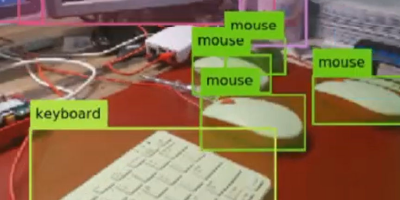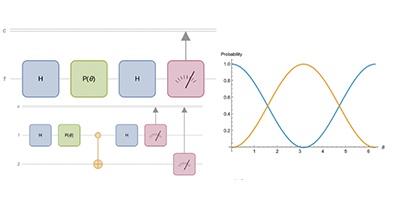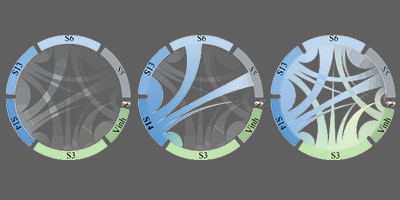Easter Eggs in Plain Sight, Climate Change Challenges and Knitted Images: Wolfram Community Highlights

Wolfram Community is our favorite, continually growing forum to share and show support for projects using the Wolfram Language, connect with other Mathematica aficionados and find solutions for coding questions. It’s also a great platform for sharing computational innovations that can benefit your local community—or beyond. We’ve collected some of the exciting ways Wolfram Community members have been giving back through Wolfram technology—check them out!
US Climate Change at the County Level
John Shonder
It’s fairly simple to discuss climate change on a global scale, but figuring out impact at the local level can be challenging. John Shonder, business development manager at energy provider NORESCO, took advantage of the range of tools built into the Wolfram Language to comprehensively process and depict data from the National Oceanic and Atmospheric Administration (NOAA), which maintains a dataset of monthly average temperatures for every county in the 48 contiguous states from 1895 to the present. Find your county to see the change in mean annual temperature over the past hundred years.
3D Crosswalk: Perspective Anamorphism as a Nudge for Pedestrian Safety
Erik Mahieu
Traffic-related deaths are on the rise around the world, and several cities have already begun to use three-dimensional painted variations of the standard pedestrian crosswalks to nudge drivers into paying more attention while driving across road junctions. Erik Mahieu used Manipulate to create a 3D sidewalk template with many different parameters available, which is an excellent tool to anamorphically keep pedestrians safe in your town.
QMRITools: Processing and Visualization Tools for Quantitative MRI Data
Martijn Froeling
Martijn Froeling, a biomedical engineer at the University Medical Center Utrecht in the Netherlands, has been developing QMRITools for years, so it’s exciting to see the finished product posted on Wolfram Community! QMRITools can be used for processing and visualizing quantitative MRI data. Martijn developed this toolbox in the context of muscle, nerve and cardiac magnetic resonance imaging, with the primary goals of allowing for fast and batch data processing, as well as facilitating development and prototyping of new functions.
Modeling Ambulance Coverage Using Isochrones
William Rudman
Public health officials currently measure ambulance coverage using fairly outdated techniques. Emergency response times could be improved with a more realistic description using isochrones, which represent all locations that can be traveled to within a certain time limit. William Rudman, a student from King’s College London, built isochrones to show how current official measures overestimate and underestimate coverage in various areas of the South Side of Chicago.
Decorating Easter Eggs with the Planets
Jeff Bryant
Wolfram’s Jeff Bryant used math and the Wolfram Language to design the surface of an egg and map images of planets’ surfaces onto them. While Easter has come and gone, the Wolfram Community conversation about decorating Easter eggs to look like planets carried on for some time. Check out the post’s comments section for several alternative decorating designs, created by other members!
Computer Analysis of Poetry—Part 1: Metrical Pattern
Mark Greenberg
There are many different styles of learning, and Mark Greenberg, an educational games developer and retired educator from Arizona, kept those in mind while taking a computational dive into teaching poetry. Using the Wolfram Language to graph patterns used by poets, Mr. Greenberg shows how to visually represent subtle poetic concepts, which can be otherwise difficult to teach. Try this tool out to teach elision, secondary stress, masculine/feminine rhyme and more!
Famous Computable Theorems of Geometry
Kotaro Okazaki
Kotaro Okazaki, an inventor working at Fujitsu Limited in Japan, was inspired by the recently released Version 12 of the Wolfram Language to use his favorite new functions, GeometricScene and FindGeometricConjectures, to test nine famous theorems of geometry. Some of the theorems he tested in this post include the Finsler–Hadwiger theorem, Thales’s theorem and the Brahmagupta theorem. Be sure to read the comments section to see how he tested an additional theorem suggested by another Community member.
Knitting Images
Henrik Schachner
Henrik Schachner, a physicist from the Radiation Therapy Center in Weilheim, Germany, was inspired by earlier posts on Wolfram Community to knit images using the Wolfram Language. He explored a computational art challenge that culminated in the invention of a new way to use image processing to design patterns for string art.
Henrik’s post engaged many other users, who flooded the comments section with questions, compliments and their own variations of Henrik’s project. Martijn Froeling, whose work using MRI data was discussed earlier in this post, joined the conversation to figure out a way to add color to Henrik’s black-and-white example. Medical experts from different countries collaborating on a computationally charged art project is just what you’d expect from Wolfram Community.
If you haven’t yet signed up to be a member of Wolfram Community, please do so! You can join in on similar discussions, post your own work in groups that cover your interests and browse the complete list of Staff Picks.











Comments